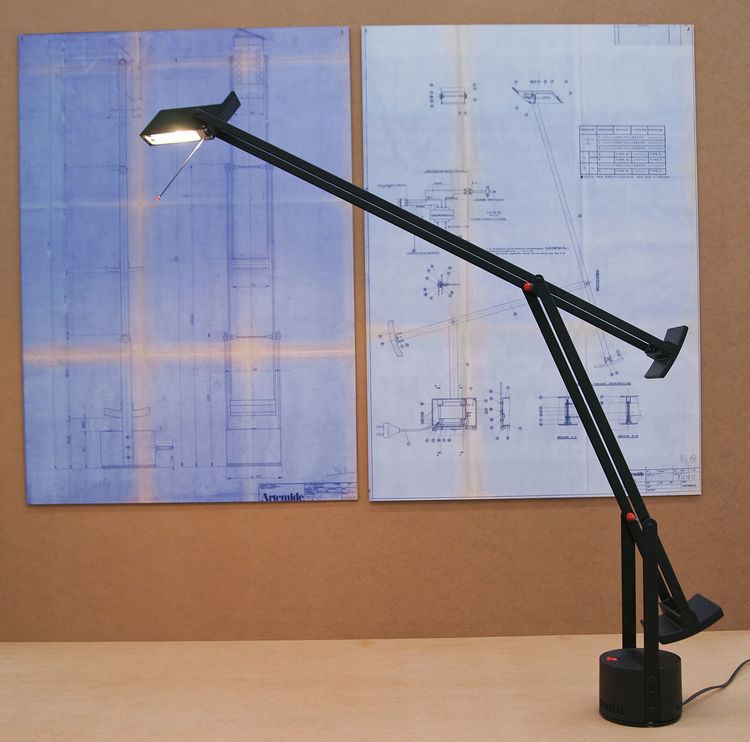 | ||
Tizio is a desk lamp created by Richard Sapper for Artemide in 1972. It has been selected for the Compasso d'Oro industrial design award in 1979. An item of it is part of the collections of the Metropolitan Museum of Art and of the Museum of Modern Art.
The position and the direction of the bulb can be adjusted; thanks to two counterweights, moving it requires little effort. Two other features of this lamp are the lack of wires (the two parallel arms are used to conduct electricity to the bulb – connected with snap fasteners that are riveted to the arms), and the halogen bulb, which was previously mainly used in the automotive industry.
The Tizio is available in a variety of sizes and colours; the original, and most widely known, is the 50 (referring to the wattage of the bulb) in black. The mid-sized model is the 35, and there's the bedside-sized Micro (20 Watts). Other colours are white, and grey metallic; and, the occasional limited edition in polished aluminium, or titanium-colour. There also is a floorstanding version, the Terra, which consist of a 70-centimeter-high pedestal with the same 11 cm diameter as the lamp's base, with the 50 added on top. The Terra-stand is also available in a 10 cm diameter, matching the 35 model. Recently, an energy-saving LED-powered version of the full-sized model has been added; as has a version of the regular 50 with a horizontally rotatable head, the Plus. The LED version is equipped with a dimmer; all other versions have a three-position switch, allowing for off, full, and – approximately – half power.
Design changes were made to the head in the nineties – a glass cover was added, a thin, wire handle was added to tilt the head as it becomes very hot.
